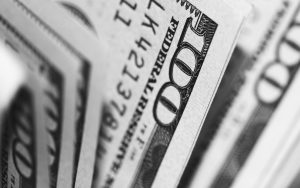Bank Accounts In Canada: Every Day Banking information

One of the very first things a newcomer to Canada would need to do is to open a bank account. There are numerus reasons why a person needs to open a bank account but just to name a few, bank accounts offer convenience, are safe and can be a great tool for managing your personal finances. For those who are new to Canada though -and are not used to pay fee for bank accounts like I was- the diversity and features of bank accounts offered in Canadian banks may be confusing. That confusion may even lead to people opening accounts which does not suit their needs causing undue pressure on their financial situation. Before we dive into different account types and their feature, benefits, and limitations, let’s take a look at Canadian banks themselves.
The million dollar question… Which Bank is the best?
The short answer is it doesn’t matter which bank you open account with. What matters is what product you use and if you are comfortable dealing with your advisor at that bank. We have over 30 schedule I banks in Canada, however, there are five that are considered the major banks in Canada controlling nearly 90% of transactions: CIBC that is Canadian Imperial Bank of Commerce, RBC which is Royal Bank of Canada, BMO which is Bank of Montreal, TD which is Toronto Dominion Bank and Scotiabank. But which bank is the best for you to have an account with? To understand which bank is going to be the best, first we must define best: there are many ways to look at this matter. Maybe the best bank is the one that is closest to your house. So, if that’s important to you and if you like to go into the branch quite often, maybe you should think about the location of that particular bank’s branch. For me personally, I don’t really go into a branch, so it doesn’t really matter. I try to do all my banking online. If you’re like me and you do your Banking online it probably doesn’t matter which bank you open account cause there is one of these banks in every city in Canada so there’s a good chance it doesn’t matter where you live, you will find all of these Banks somewhere near your house not too far. For me, the best bank/account means the most benefits for the least amount of money. Benefits here is not only the account features and benefits but also the relationship and advice the bank advisors can give you to better manage your financial needs.
To have a basic understanding of type of bank accounts available in Canada, lets go over different types of bank accounts and understand their core features and befits.
Chequing Accounts:
Chequing account is used for your everyday transactions and will help you save unnecessary fees and reach your financial goals faster. Typically, this is where your paycheck or other income comes in. The money that goes in this account is what you are planning on spending for things like Bill, rent and groceries. Since the money is intended for everyday transactions, chequing account often come with a monthly fee for a set number of transactions depending on your chequing account type.
Fee: We all don’t want to pay money for a bank account every month but unfortunately here in Canada a lot of bank accounts charge a monthly fee. Good news is fee is waived very often one way or another (for example with a minimum balance). “Waived” here means Banks don’t charge you. One of the most common ways to have the fee waived is to have a minimum balance in your account during the month:
Example: Monthly fee will be waived if you maintain 4000$ in your account during the month. Minimum monthly balance indicated must be maintained at the end of each day in the month to qualify for the rebate. That means you need to have 4000 all the time in your account. If you drop under 4,000 just one day they’re going to charge you the full monthly fee for the whole month so every day you need to have at least $4,000 in your account. If your balance temporary drops below 4000$, you still can get that monthly fee rebate as long as you bring your account’s balance back to 4000$ before the end of day.
Not every bank has the same method for fee rebate. Some may have minimum balance offer. Some may have multi-products rebate (meaning if you get two or more products from the same financial institution, they will rebate full/partial part of your bank account fees). Some have newcomer packages and some senior rebate programs.
In general, if you are a newcomer to Canada, a senior of +65 years old, opening first ever account with that bank or a student, it is a very good idea to check with bank advisor to see what kind of promotions or rebates are available for you. There is almost always a promotion/rebate going on for these types of customers.
Number of Accounts: There is no limitation as to number of chequing accounts someone might have in a bank, however, due to monthly costs associated with chequing accounts, most people keep only one personal chequing account per financial institution unless they have a good reason to have more. A typical reason is to have joint chequing account with your children under the age of majority to let them use bank cards or a desire to separate i.e. account you receive your salary vs. the account you spend money (for example, sometimes you want to have different chequing account to use for gym membership / club memberships so that just in case those clubs keep charging you after cancellation, you have the option to close your account and prevent them from taking money out of your account. If you used the same chequing account you received your salary for gym membership, you could not easily close your account).
Cheque-Book: With any chequing account you can get a cheque-book. It is advised to get your cheque-book early when you open your account. It can be used to pay for a lot of things (like rent) and it is very good when you need to keep a record of your payments. You may also need to provide your void cheque to your employer to deposit money into your account as well. A void cheque is a cheque with the word “VOID” written across it, which prevents anyone from filling out the cheque and using it to make a payment. In reality though, you don’t really need to get a physical cheque and write void over it to give it to your employer. In case of most financial institutions, you can easily download a picture of your account’s void cheque from your online banking account.
What are void cheques used for? You may be asked to provide a void cheque when setting up a payroll deposit or automatic payments. Since your account information is printed on each cheque, the void check can be used to set up an electronic link to your bank account. Voiding the cheque ensures that you aren’t sending out a “blank cheque” that criminals could fill in and use to withdraw money from your account. In addition, void cheques can be used by organizations such as cell phone providers -with your permission- to take money out of your account for bill payment as well. You can set up automatic payments for recurring expenses like bills and rent so that the money is automatically withdrawn from your account instead of you having to send a cheque or pay in person.
Saving Accounts:
Savings account are where you save money for future goal. This means interest is the key feature and purpose of the account. The longer your money stays in the savings account, the more money you’ll earn in interest. So in short, a savings account is a bank account that pays you interest in exchange for depositing money and maintaining a balance in the account. When people need access to money for day-to-day transactions, chequing accounts are ideal. However, when you decide its time to save some money, and you want to earn interest on it, savings accounts are the better option. The most important thing you should be careful about saving accounts is that in most cases, number of allowed debit transactions per month is limited and if you use them as you would use your normal day-to-day chequing account, you would pay a hefty price for that.
Other Chequing and Saving accounts, there are several other type of accounts you can open in Canada that you may not be familiar with.
TFSA (tax free saving account): Rather than being a bank account, TFSA is plan or saving vehicle. Unlike chequing or saving bank account, the money inside TFSA does not need to be cash. In fact, it actually makes no sense to keep only cash in your TFSA account as the main feature of this type of account is tax sheltering of capital growth. The Tax-Free Savings Account (TFSA) program began in 2009. It is a way for individuals who are 18 and older and who have a valid social insurance number to set money aside tax-free throughout their lifetime. Contributions to a TFSA are not deductible for income tax purposes. However, any amount contributed as well as any income earned in the account (for example, investment income and capital gains) is tax-free, even when it is withdrawn. Unlike normal bank accounts, TFSA is a pan under which you can hold variety of investment vehicles such as saving account, stocks, bonds, mutual funds, GICs and many more.
RRSP (registered retirement savings plan): An RRSP is a retirement savings plan to which you or your spouse or common-law partner contribute. Deductible RRSP contributions can be used to reduce your tax. Any income you earn in the RRSP is usually exempt from tax as long as the funds remain in the plan; you generally have to pay tax when you receive payments from the plan.
RESP (registered education savings plan): A Registered Education Savings Plan (RESP) is a special savings account for parents who want to save for their child’s education after high school. In general, contributors (usually parents) contribute to the plan and contributions are invested as per parent’s preference. Money growth within the plan is tax sheltered until is used by beneficiary with he/she attends a post-secondary school. The capitals gains then used to pay for education costs and are taxed as students income which is usually less than their parents.
RRIF (registered retirement income fund): A registered retirement income fund (RRIF) is an arrangement between you and a carrier (an insurance company, a trust company or a bank) to which you will need to transfer your RRSP after the age of 71. While you have your RRSP, you can keep investing and contributing to RRSP to build your wealth, however, unlike RRSP, when funds are transferred into RRIF, a minimum amount has to be paid each year to beneficiary. The minimum amount must be paid to you in the year following the year the RRIF is entered into. Earnings in a RRIF are tax-free and amounts paid out of a RRIF are taxable on receipt.







